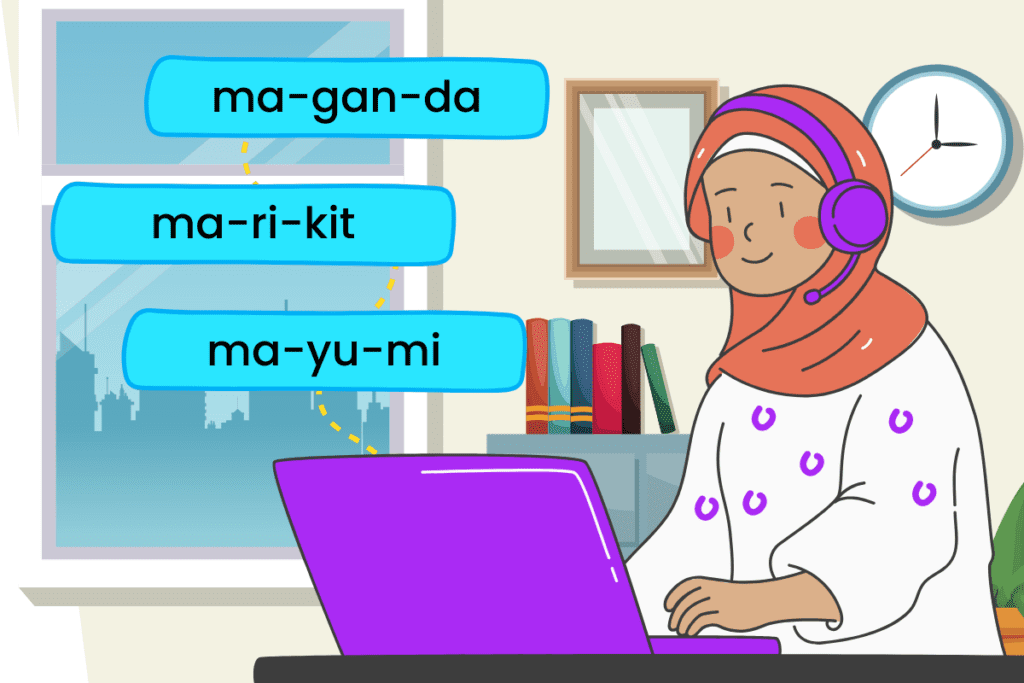Long-Term Language Learning Tips for Tagalog Learners

The beginning phase of learning a language is always exciting. It’s when you’re in the middle and progress seems minimal that things get difficult and motivation starts to dwindle.
Check out these tips and try to incorporate these in your language learning habits.
Building Vocabulary: Tagalog Words For Family Members

In a society that places immense importance on politeness, respect, and familial bonds, mastering terms of kinship and endearment is not just a linguistic achievement but a cultural one. These terms reflect the Filipino values of respect, family closeness, and love that are central to the culture.
Using Marking Particles in Tagalog: Explore Ang, Ng, and Sa

Ang, ng, and sa, besides being three of the most commonly used Tagalog particles, are also called marking particles. They indicate the relationship of nouns and pronouns to other elements in a sentence.
Building Vocabulary: Different Shapes in Tagalog

Shapes can be an integral part of conversation, making them necessary in one’s language repertoire. Shapes make it easier to describe something or someone, allowing conversations to run more smoothly.
Five Rules Of Using “Nang”

A native speaker is not exempt from making mistakes, especially when it comes to grammar. This can be observed in the case of using “nang” in Tagalog.
Telling Time In Tagalog

Mastering how to tell time in Tagalog is one of those practical skills that will not only help you navigate conversations with ease but also improve your ability to manage day-to-day activities.
Tagalog Numbers: From 1 to 100 and Beyond

Learning Tagalog numbers is essential. Whether you’re talking about time, money, age, or simply counting objects, numbers help us communicate more effectively and avoid ambiguity.
First Conversations in Tagalog: Common Scenarios

Getting comfortable with Tagalog begins with understanding some common statements. Let’s go through possible scenarios such as greetings, basic courtesy, polite speech, and more.
8 Strategies To Expanding Your Tagalog Vocabulary

When learning Tagalog, broadening your vocabulary may feel overwhelming. The sheer number of words to learn, along with their various meanings and uses, can make the task seem daunting. But not to worry, there are several strategies to expanding your Tagalog vocabulary.
Na, Ng, G: How To Connect Words Using Tagalog Ligatures

In Tagalog sentence construction, you need more than just a repertoire of words. You also need to connect words using Tagalog ligatures or pang-angkop.
By learning how to properly use ligatures, you elevate your language skills and can speak more naturally.
Expressing Time in Tagalog: Months and Days of the Week

Time is an important aspect of learning a language. Understanding the months and days of the week in Tagalog connects you to the cultural rhythms and traditions of the Philippines.
Many Filipino festivals and holidays are tied to specific dates. Knowing these terms allows you to participate in cultural conversations and shows respect for the traditions of Tagalog-speaking communities.
How are Nominative and Possessive Pronouns Used in Tagalog?

Pronouns can be used to refer to a person, animal, or thing, preventing repetition and redundancy.
Nominative pronouns are used to denote the subject of a sentence.
Meanwhile, possessive pronouns are used to indicate possession or ownership of the subject or the object.
